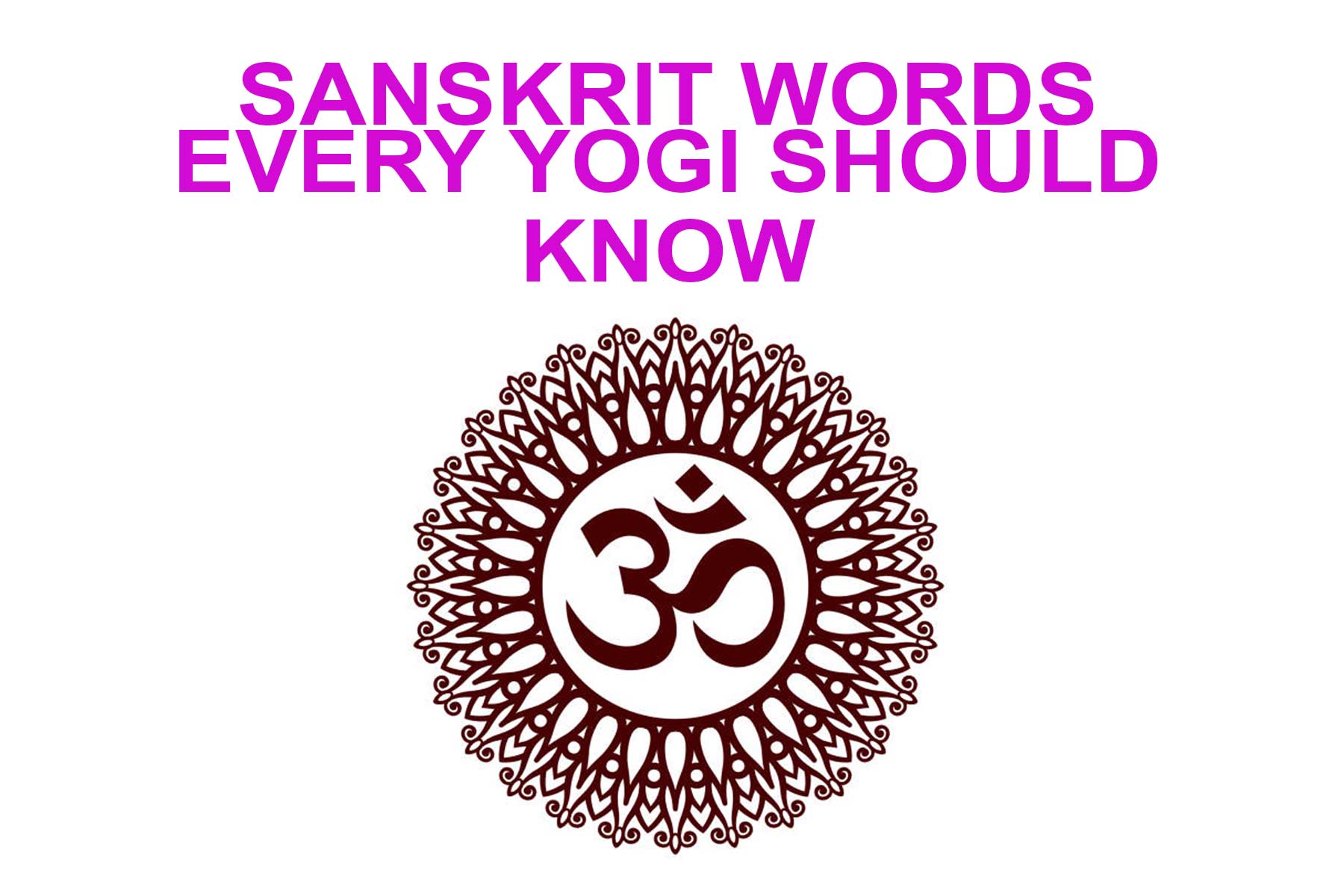
31 Jan 2022 HYN Himalayan Yoga Academy
Sanskrit is universally recognized as the language containing the earliest literature in the world. Originally, the yoga practice was transmitted by communication of guru and student in an Indo-Aryan language called Sanskrit. Sanskrit words are meaningful words d so yoga asana can be better understood when referred by their Sanskrit names rather than their given English names.
Here are some Sanskrit words that is often used and useful for your everyday practice.
- AUM/OM
AUM/OM is the sacred sound which is believed to resonate at the same vibration of the universe. It represents the union of mind, body and the spirit. It is used in contemplation of ultimate reality.
- Asana
It is traditionally defined to be seated in pleasant and relaxed position which are meant to facilitate meditation. Late, extended in hatha yoga and modern yoga as exercises. The asana has physical, spiritual and mental benefits.
- Namaste
It is often used as greeting in part of Nepal/India. The Namaste mudra is accompanied by placing both palms together in front of your heart. It is often translated as “the light in me honors the light in you.”
- Bhakti
Bhakti simply means participation, attachment and devotion for a personal god, worship and purity. The idea of Bhakti is present in Bhagavad Gita, a sacred book of the Hindus. The path of Bhakti is often linked to Krishna, although nay god or personal deity can be worshipped.
- Shanti
Simply means peace or inner peace which is often chanted three times after the final OM in a yoga class. It is a deep word that symbolizes ,universal peace and when repeated three times, calls for peace of mind, peace of speech, and peace of body.
A Sanskrit word mantra” from the roots “manas” which means the linear thinking mind. Although there are thousands of mantras which have been recorded and memorized for many generations, there is no actual definition for what a mantra is. But all those mantras main purpose is cultivate awareness, intention and elevated connection.
- Karma
Karma is the universal casual law which means each and every action we do has its own corresponding energy. This spiritual principle goes much deeper than that. Following the laws of karma, we can change our life`s path and make our future better through our good deeds and actions. Everything we do is connected to Karma.
Chakra means a rotating wheel in Sanskrit. It refers to the energy centers that is located all over the body where prana activates and accumulates. There are seven main chakras in our body located from our root to the crown. They are:
- Muladhara Chakra- root
- Svadhisthan Chakra- sacral
- Manipura Chakra- solar plexus
- Anahatha Chakra- heart
- Visuddha Chakra- throat
- Ajna Chakra-third eye
- Sahasrara Chakra-crown
- Yoga
This is the most known Sanskrit word all over the world till now maybe. Yoga is simply defined as the unification of body, mind and soul. Also it unites the inner self with the ultimate reality.
It is yogic practice which simply means the regulation of breath. There are various techniques to practice pranayama, but all purpose is to deepen and lengthen breathe from meditation.
- Kirtan
Kirtan is derived from the Sanskrit root which simply means to call, recite, praise, or glorify divinity. It is also said that a devotional singing of mantras or any divine words usually accompanied by musical instruments is really fun to sing and listen to. It helps in connecting to the divine world through pure sound, music, and mantras.
- Mudra
Mudra means a gestures which is spiritually linked where different mudras has its own energy, benefits and gestures. The word Mudra is divided into two separate words mud- joy and ra- produce. So mudras are meant to spread joy around you and spread positive vibe around you at the time of practice.
- Hatha
Hatha means the unification of sun and moon forces. The word hatha means willful or forceful. It promotes physical and spiritual discipline of Yoga. It balances the mind, body and chakras through specific asanas and controlled meditative breathing.
Bandhas are locks that are practiced in different parts of body in order to direct and regulate the flow of energy and prana. These locks are located in the specific locations:
- Mula Bandha- the root lock
- Jalandhara Bandha- the throat lock
- Uddiyana Bandha- lifting of the diaphragm lock
- Maha Bandha- all three locks at the same time
Guru is the Sanskrit term for mentor, teacher, guide, expert or master. A guru is the one spiritual`s guide who hold a duty to pass on transmitted knowledge to their students and disciples. They do not have only knowledge of books, but they are believed to have a great wisdom of the teaching which is inherited from generation to generation.
Conclusion
All these sanskrit words will be taught during your yoga course where you will be guided by the gurus and will be taught how these words help you understand your body and the world. These worlds are highly meaningful and all these words will help you understand you the meaning of yoga . During our yoga teacher training Nepal course as well we have taught many western students the meaning of these sanskrit words which has highly influenced them in knowing more about them and hence using these words to learn more on yoga and meditation. We also teach our yoga students about the mantras which consists most of these sanskrit words which activates the body, mind and soul in many ways. The word AUM is taught to all the people in the world as it is the universal word.
Lets Learn these amazing sanskrit words to learn more about yoga and meditation.
